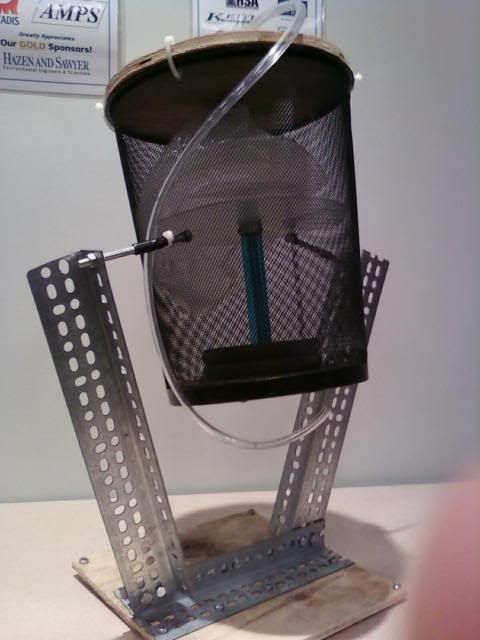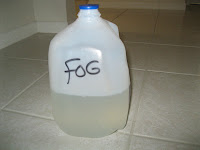 |
| No, they look nothing like this. |
- Design Ingenuity - The water tower must have a creative, original and well thought-out design.
- Cost Efficiency - The water tower must use recycled materials.
- Structural Efficiency - The water tower must be lightweight, sturdy, and have a high capacity.
- Fill/Drain Rate - The water tower must be able to fill and drain quickly.
When the club finished last year's tower, we didn't think anything could go wrong on the day of the competition. In fact, we hemmed and hawed at the possibility that anything wrong was going to happen, since our drain rate was to be so stellar. Regardless, take a look at last years entry.
 |
| It's.. Beautiful? |
This year took on a whole new perspective. With General Grant in plenipotentiary power, our opponents were to cry in mercy. After weeks of discussion and planning, two creations emerged. Those would be the skyscraper and Slappy.
 |
| The skyscraper. |
 |
| Slappy Slapple "Le Gator" Reptar. |
Now, I worry about Slappy. The bag is actually a nylon bucket with a plastic sheet attached to one end. The bag's umbilical cord sways loose, being affixed only by silicone sealant. Airtight it is, but on the day of the competition the bag turned out to be a sheer farce. Due to the bag's rigidity, Slappy was reluctant to fill up with water, and instead leaked like a fire hose. All hope was lost.
Unfortunately, the day ended with neither Slappy nor the skyscraper taking a spot on the winner's podium. The judges, being the benevolent people they are, decided to recompense the science club for all of the effort we gave. Slappy ended up winning best design ingenuity, and the skyscraper won judges top pick for a total of $100. After hearing this, my grin could be seen from a bird's-eye view. Satisfaction at last!
Grant













































